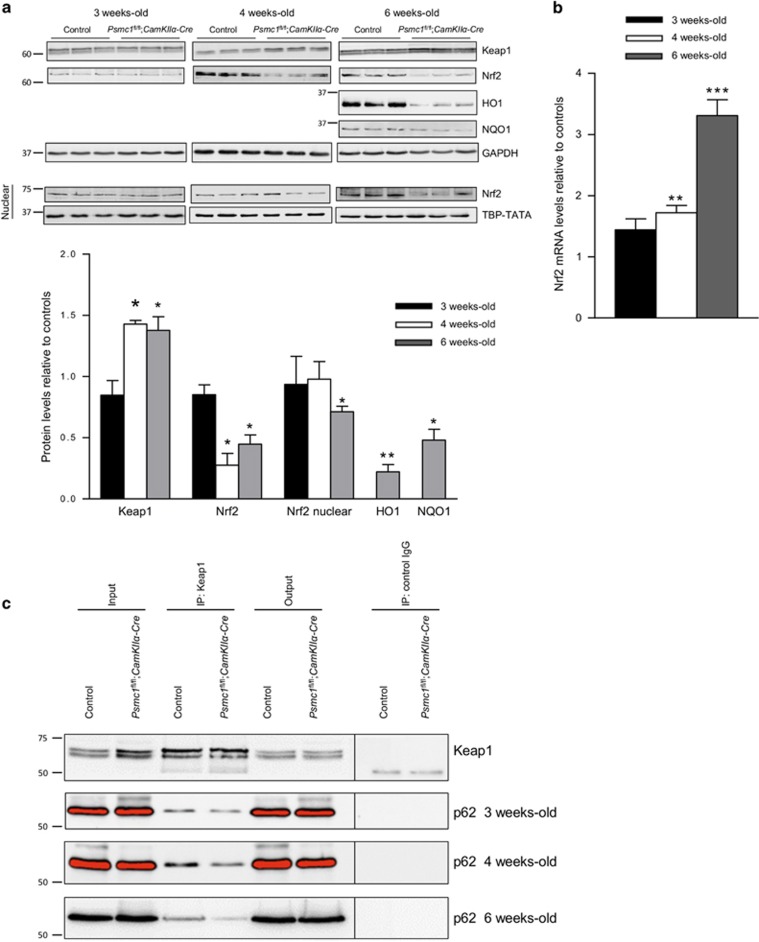Figure 5.
26S proteasome dysfunction in neurons impairs the Keap1-Nrf2 pathway. (a) Representative immunoblots and quantification at 3, 4 and 6 weeks old of control and Psmc1fl/fl;CaMKIIα-Cre cortices. Glyceraldehyde 3-phosphate dehydrogenase (GAPDH) was used as a loading control at each age for quantification; a representative GAPDH is shown. An immunoblot is also shown for Nrf2 in nuclear extracts at 3, 4 and 6 weeks old; TATA-binding protein TBP (TBP-TATA) was used as a loading control at each age for quantification. Error bars represent S.E.M. of n≥3 mice. *P<0.05 and **P<0.01 by unpaired Student's t-test. (b) Nrf2 gene expression in control and Psmc1fl/fl;CaMKIIα-Cre cortices at 3, 4 and 6 weeks old. Error bars represent S.E.M. of n=8 mice. **P<0.01 and ***P<0.001 by unpaired Student's t-test. (c) Immunoprecipitation of control and Psmc1fl/fl;CaMKIIα-Cre cortical homogenates at 3, 4 and 6 weeks old with Keap1 antibody followed by western blotting with Keap1 and p62 antibodies. The amount of Keap1 immunoprecipitated was similar in control and Psmc1fl/fl;CaMKIIα-Cre mice at 3, 4 and 6 weeks old; therefore, the Keap1 image (6-week-old) is representative of all ages

